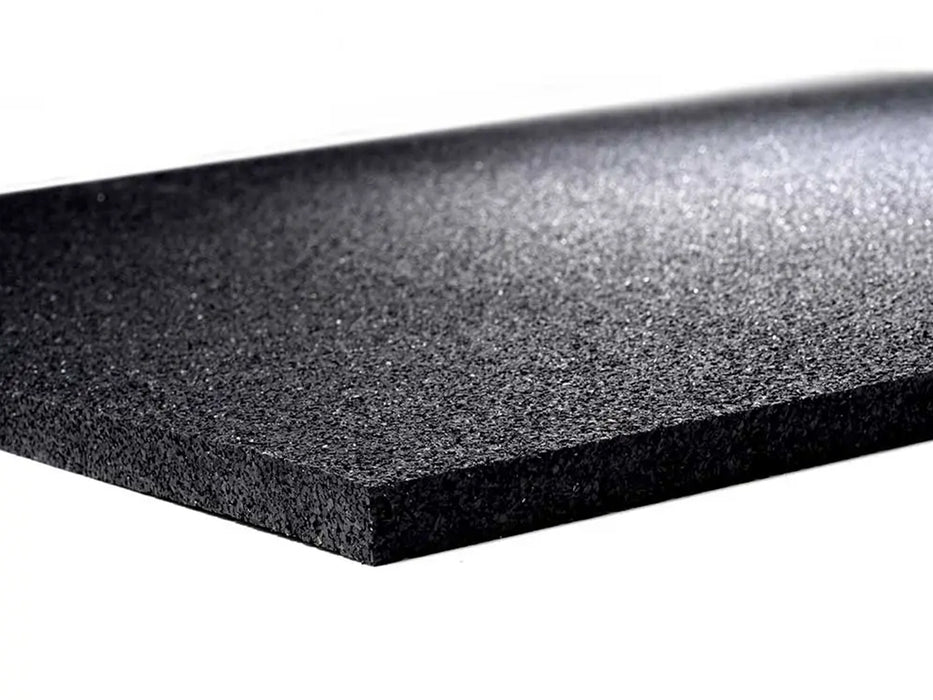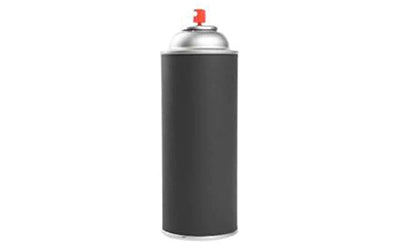
SM20 Rubber Wall Panels
These 1m² high-performance slim-line panels offer powerful wall soundproofing in a simple stick-on format—easy to retrofit and a long-standing bestseller for effective, DIY-friendly acoustic upgrades.

These 1m² high-performance slim-line panels offer powerful wall soundproofing in a simple stick-on format—easy to retrofit and a long-standing bestseller for effective, DIY-friendly acoustic upgrades.
The SM20 Adhesive is a high-strength contact adhesive specifically engineered for use with the SM20 panel system. Designed to handle high load-bear...
View full detailsPhonestar SBx 10mm Boards are high-performance, German-engineered acoustic boards that deliver superior soundproofing in a slim, 10mm design. Be wa...
View full detailsPlasterboards are a cornerstone of modern interior construction, offering versatile and effective solutions for walls, ceilings, and partitions. At...
View full detailsAcoustic Putty Pads for Power Sockets are an essential addition to any soundproofing project, designed to seal gaps around electrical socket boxes ...
View full detailsTecsound 50SY Self-Adhesive Membrane is a highly effective, market-leading acoustic membrane that provides exceptional soundproofing for walls, flo...
View full detailsAcoustic sealant, or intumescent sealant, is a high-strength, flexible adhesive and sealant designed to enhance the acoustic integrity of any space...
View full detailsThe SM20 Rubber Wall Panels are designed to provide high-performance soundproofing, particularly for airborne noise through party walls. Made from recycled rubber, the SM20 panels offer a reliable sound insulation solution that’s easy to install—even for those with basic DIY skills. These panels effectively enhance the soundproofing of single-skin brick, stud, and breezeblock walls, making them an ideal choice for domestic properties.
A soundproof rubber panel is a dense, high-mass barrier created from recycled rubber, specifically engineered to block sound transmission through walls. These panels are designed to absorb and reduce airborne noise, making them ideal for soundproofing party walls and other shared walls in residential settings. The SM20 panels are particularly effective for upgrading sound insulation without taking up much space.
The SM20 panels work by creating a dense barrier that blocks airborne sound waves from passing through walls. When properly installed with SM20 adhesive and finished with acoustic plasterboard, these panels prevent sound leaks by sealing gaps and reinforcing the wall’s overall density. The recycled rubber material efficiently absorbs and dissipates sound energy, reducing the amount of noise that travels between rooms.
The SM20 Rubber Wall Panels are highly effective at stopping airborne noise, especially when used as part of a full soundproofing system. When installed on a single-skin brick wall, the system can achieve noise reduction levels exceeding 48dB, meeting and surpassing Part E requirements for party wall soundproofing. This makes SM20 panels an excellent choice for reducing nuisance noise in shared walls.
These versatile panels are ideal for use in residential and domestic properties, especially in party walls between rooms or neighbouring homes. They can be applied to single-skin brick, stud, and breezeblock walls. The SM20 panels are suitable for spaces where effective soundproofing is required without sacrificing room space, such as living rooms, bedrooms, and home offices.
Installing the SM20 Rubber Wall Panels is a straightforward process that’s DIY-friendly and effective for soundproofing. Here’s a step-by-step guide to ensure the best results:
By following these steps, you’ll achieve a robust soundproofing system that effectively reduces airborne noise through walls. This straightforward process creates a reliable, long-lasting soundproof barrier with the SM20 Rubber Wall Panels.
If you are soundproofing a party wall be aware of the possibility of sound passing through wall below the level of the floor boards. To combat this you should consider using 100mm AMW60 filling the void under the floor immediately adjacent to the wall.
Another area where sound might be penetrating is through the party wall above the ceiling. If the ceiling is single skin plasterboard you can try and augment this by adding a further layer of 19mm plank and even think about using the noise blocker quilt in between the ceiling and that 19mm plank. While flanking transmission is an issue do not become too overly concerned with it if it puts you off doing the job in the first place. Ceiling improvement can be done post wall work if it proves to be a weak link.
If the party wall contains a fireplace that is not used then the ideal solution would be to brick up the opening and then treat the whole party wall with SM20 panels. Whilst this is ideal it is not often possible. From our experience we tend to find that it is the alcoves that are performing much worse than the chimney itself. This is due to the quality of original craftsmanship and the thickness of bricks used in the party wall originally.
Here are the main details for this product:
Dimensions: 1000mm x 1000mm
Thickness: 20mm
Pack Size: 1 Panel
Weight: 15kg each
Density: TBC
Coverage: 1.0 sqm
Fire Rating: EN 13501-1 - E
View Product Information Guide
Visit our Fitting Instructions section for more detailed guidance specific to your application.
Please contact our team if you have any questions about this product.
Let us calculate that for you, and show you the additional products you might need to complete your soundproofing system.
Check out our SM20 Wall Solution
Check the panels before installation removing any bits of loose paper that may still be stuck from the manufacturing process, and remove any dust to make sure panels are dry.
Now proceed as follows: The sound insulation is applied as soon as the wall is suitably prepared. Ensure the wall is dry and free of dust or grease and the surface to be treated is flat and sound. Adjust the spray of the adhesive by turning the nozzle.
Bond the SM20 panel to the pre-glued area of the wall and apply with a firm pressure over the entire panel to ensure it is properly bonded over its entire surface. You should apply the SM20 in rows and work upwards. Starting in a bottom corner. The application of the spray adhesive also applies to the plasterboard.
Make sure you do all necessary cuts to allow for corners and electrical fittings before using the adhesive as it goes off very quickly. Care must be taken to ensure there are no unnecessary gaps between the joints of the sound insulation. Any holes or spaces can be filled with acoustic sealant.
When each wall has been covered with the SM20 acoustic panels, no further treatment should continue until the adhesive has sufficiently cured. However if it is warm (over 21 degrees) the curing is fast and work can continue the same day. We recommend using two layers of 12.5 mm acoustic plasterboard with this solution although you can use 15mm or even 19mm plank.
Cut the acoustic plasterboard to the correct height between the ceiling and floor allowing a small gap at both bottom and top before applying the adhesive. When each board has been treated with the adhesive, place it into position onto the wall ensuring a small gap is left where the board meets the floor, walls and ceiling. Proceed with more boards across the entire wall and again, leave a small gap where the last board is cut in. There should now be a small gap all around the edges of the plasterboard where the boards meet the floor, ceiling and walls. It is easier to use thin packing pieces to achieve this, which can be removed when the adhesive has cured. This gap should then be filled with acoustic mastic.
Repeat the process for the second layer of plasterboard but this time overlapping the joints of the first layer. It may be necessary to support the plasterboard until the adhesive has sufficiently set. If you run out of adhesive at this point you can use any common spray tack adhesive or Unibond wallboard adhesive to add the final layer of plasterboard. It is imperative however that you use SM20 adhesive for the SM20 layer.
When the adhesive has cured, the soundproofed wall can be finished by plaster skimming or as desired. However, if plastering, be sure to maintain the small gap around the edges. This can be achieved with the edge of the trowel. When finished, the skirting board can be reapplied with adhesive or plasterboard screws. All screws used must be designed for plasterboard and must NOT bridge the insulation. Nails must never be used. Skirting boards should be fixed with a small gap beneath and in each corner to ensure the wall remains “floating”. All gaps can be filled with flexible acoustic sealant before decorating.
Fitting of shelves, cupboards and radiators, etc, should not commence until the adhesive has fully cured and at least a week after the plasterboard has been bonded. Be sure to use only the correct screws and plugs designed for use with plasterboard and be careful not to penetrate the insulation through to the structural wall.
Before using the SM20 adhesive, read the directions on the back of the can then proceed as follows;
Occasionally, for various reasons, problems may be encountered bonding the product to the wall. When this occurs, mechanical fixings can be used in addition to the adhesive as follows:
If fixing to plasterboard faced timber stud, additional normal wire nails hammered well into the insulation so the heads are below the panel surface work well. In these cases use only sufficient nails to secure the insulation effectively.
When fixing to masonry walls nail guns can be used to shot fire nails through the insulation or alternatively, masonry nails combined with battens can be used but these must be removed when the adhesive has cured.
Visit our Fitting Instructions section for more detailed instructions relating to your specific application.
Check out our Soundproofing Guides for more information, advice and tips on all aspects of soundproofing.

SM20 glue is a very high strength contact adhesive, designed specifically where high load baring ability is necessary. SM20 panels weigh 15kg each, so it is vital the correct adhesive is used.
Please Note: Other adhesives will not create the required bond for SM20 panels.